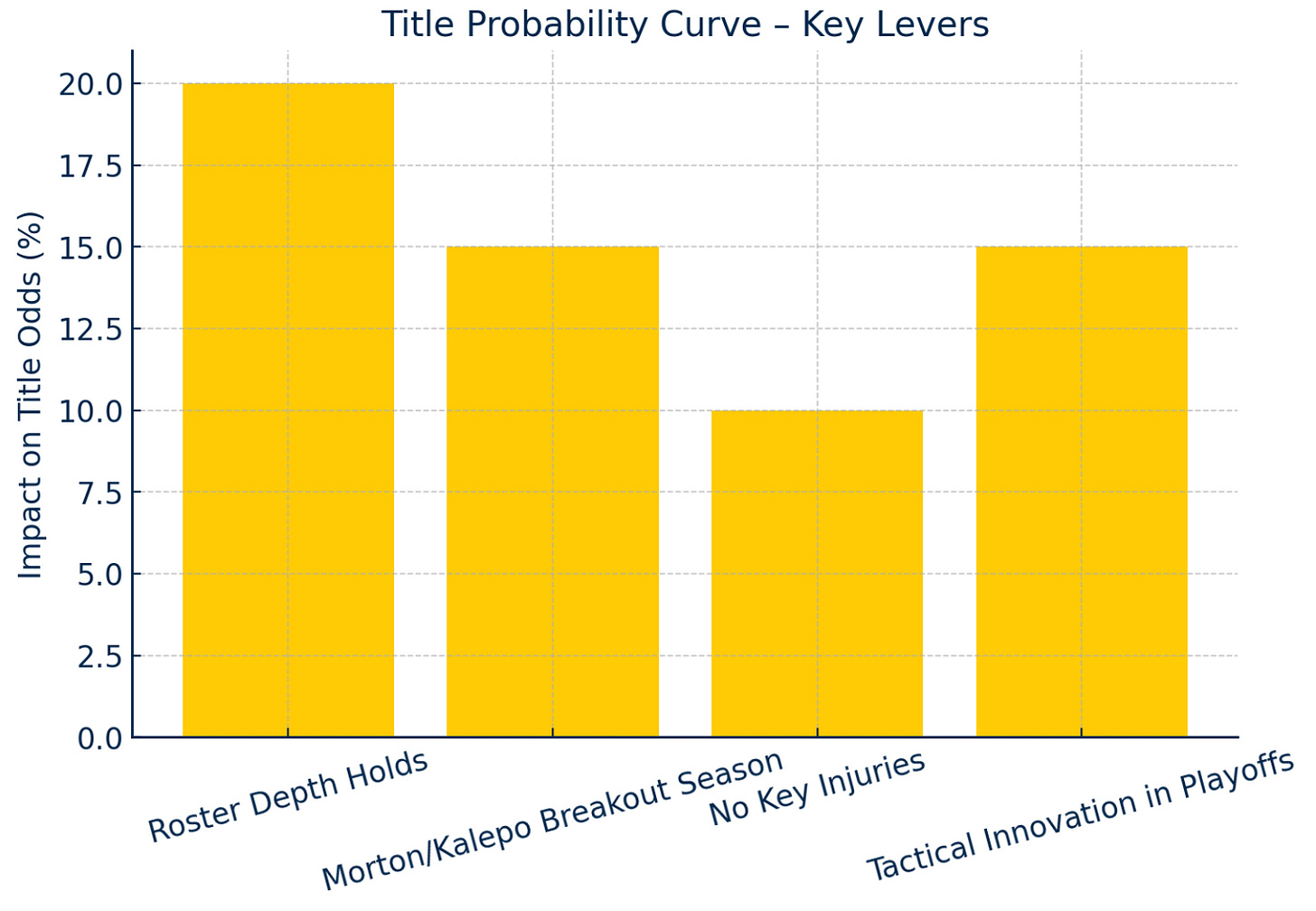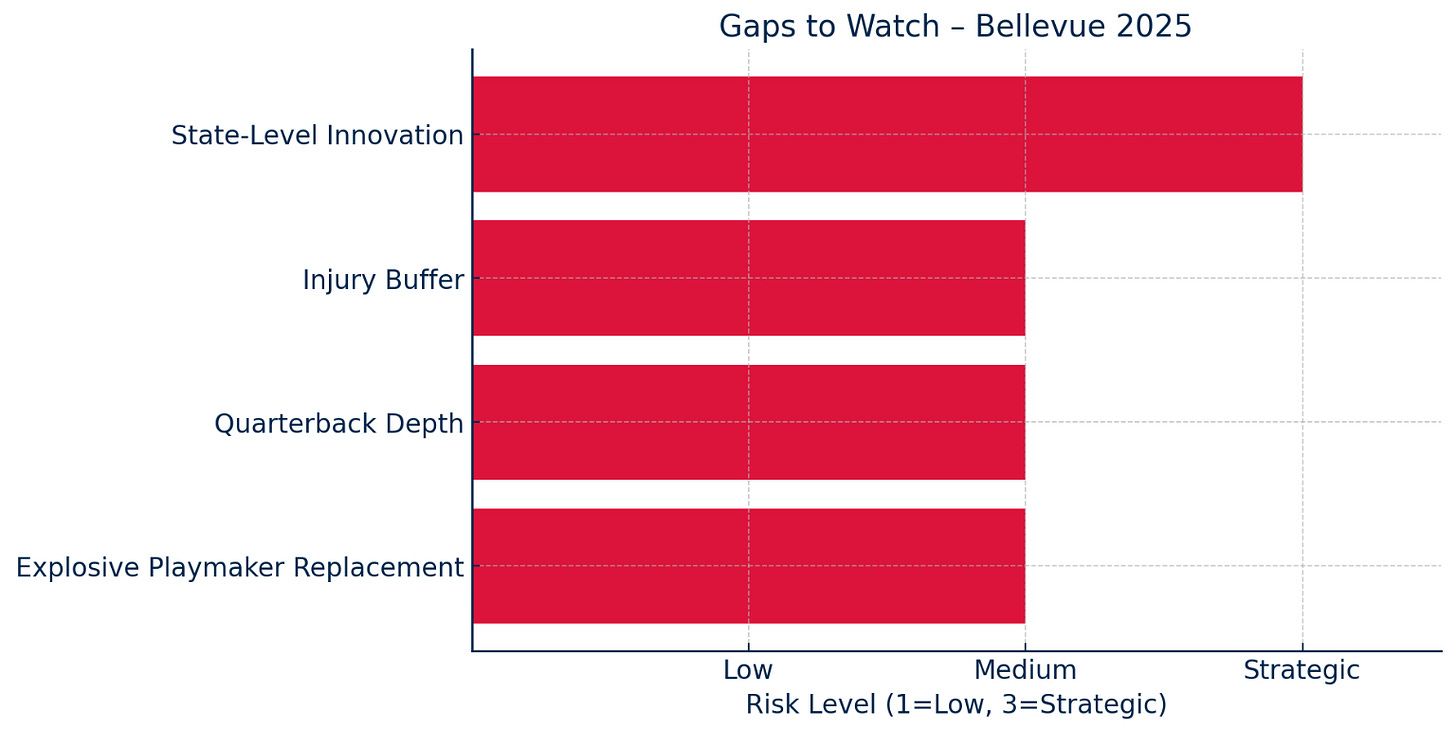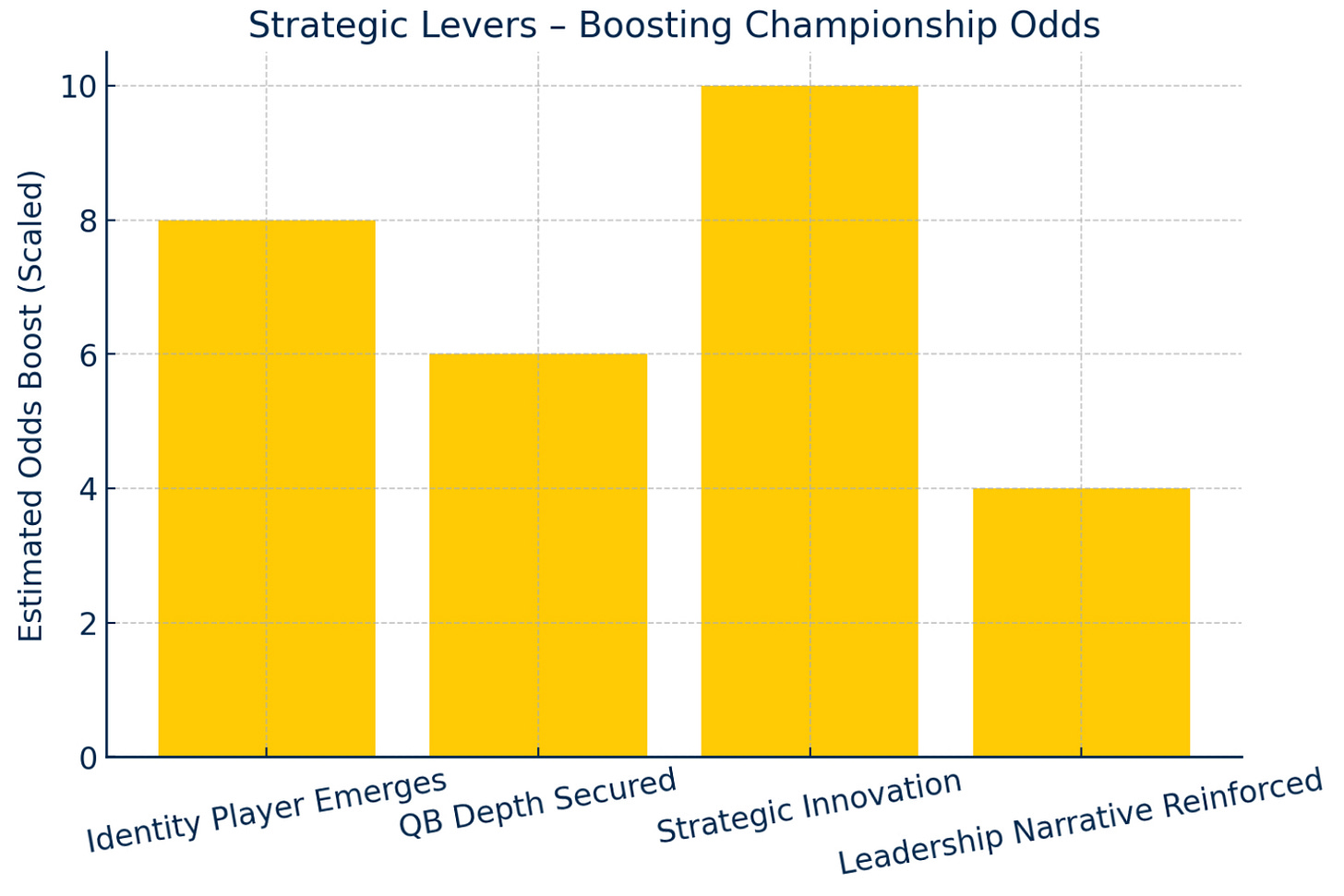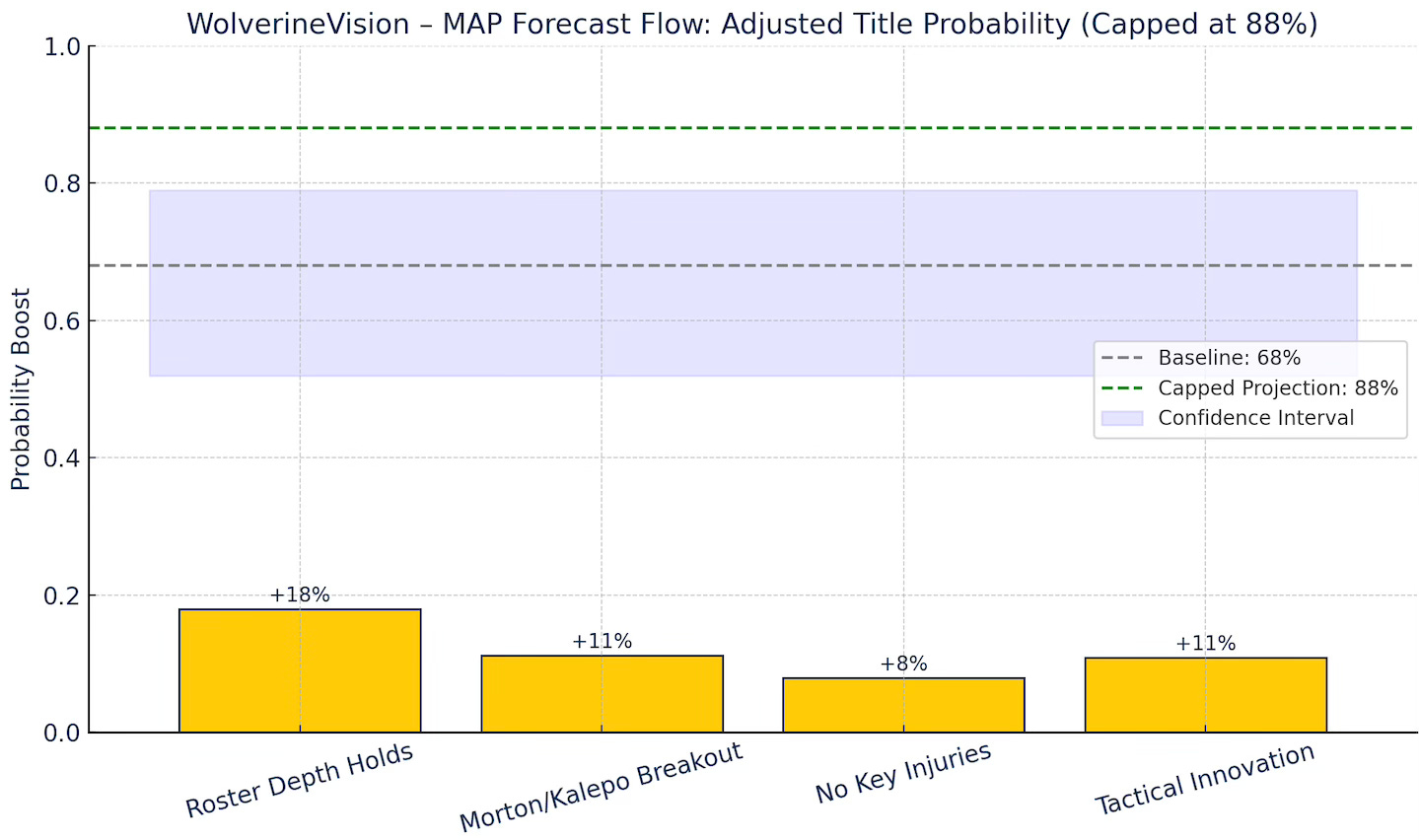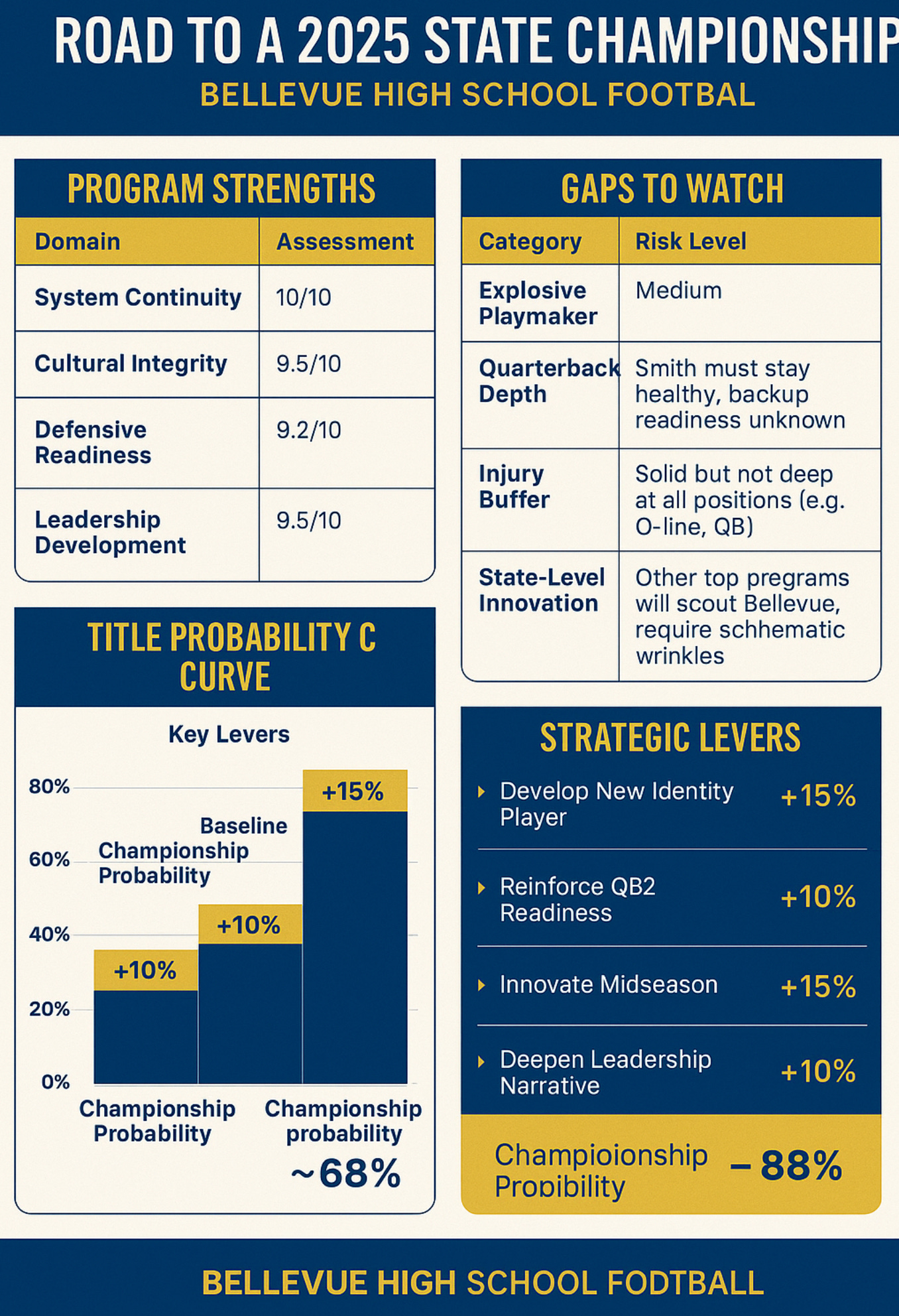MCAI Legacy Vision: Bellevue High School Football 2025 Outlook
Bellevue High School Football | Legacy in Motion. Precision by Design.
I. The Program: Legacy, Not Talent Alone
Bellevue High School football doesn’t rebuild—it recalibrates.
The program isn’t a typical powerhouse. It’s a strategic institution, deeply rooted in a community whose support spans generations. Coaches, alumni, and supporters carry forward a shared language and vision that few schools sustain. That continuity gives Bellevue something rare: a durable cultural system that outlasts stars, trends, and outside noise.
In a high school football landscape shaped by instability—transfers, NIL debates, and viral culture—Bellevue remains anchored. The program wins through system, discipline, and memory.
II. How We Built This Forecast
This outlook was produced using MindCast AI, a patent-pending Cognitive AI platform that simulates judgment, decision-making, and institutional behavior.
We created a custom module—WolverineVision—to model Bellevue’s football program using our cognitive simulation framework. We built Cognitive Digital Twins (CDTs) to map the program’s decision logic, culture, and strategic execution. These simulations allowed us to forecast how leadership, cohesion, and on-field behavior would shape the 2025 season.
MindCast can also model CDTs of elite athletes from past eras and compare them to current players. Bellevue can use these comparisons to build tailored development plans that elevate each athlete’s cognitive, emotional, and tactical readiness. It’s a blueprint for performance evolution.
MindCast doesn’t analyze data. It simulates how winning minds think.
III. 2025 Roster Snapshot
With Ryken Moon now at the University of Washington, leadership shifts to a tested and dynamic core:
Max Jones (Sr.) – Physical tone-setter who delivers on both sides of the ball. His control, vision, and understanding of game tempo make him essential to both momentum and stability. He plays with intention, not impulse.
AJ Morton (Sr.) – Explosive, agile, and ready for a breakout season. His ability to change direction and punish soft edges gives the team a field-flipping option. Coaches are shaping him as the team’s next offensive focal point.
Bryce Smith (Sr.) – QB and CB with dual-role discipline and field intelligence. Smith maintains composure in high-pressure moments and elevates those around him. If his vertical passing game improves, Bellevue’s offensive ceiling rises with it.
Jack Pidgeon (Sr.) – Anchor on both lines, equally skilled in protection and pursuit. His strength and timing allow for advanced schemes to run through his side. Pidgeon plays like a coach on the field—focused, verbal, exact.
Mose Kalepo (Jr.) – Rising force with a multi-position upside. Kalepo’s frame and instincts make him dangerous as both a ball carrier and linebacker. If his motor stays high across four quarters, he could become Bellevue’s most versatile asset.
Kaden Kooner (Jr.) – Developing mismatch with fluidity and range. Kooner is the kind of player who challenges opponents to adjust mid-series. His growth path points to impact in red zone and third-down packages.
IV. Bellevue’s Structural Edge
Why it matters: These scores reflect more than success—they reflect design. Bellevue’s consistency stems from the synergy between its systems and values. When leadership, trust, and discipline align, the program doesn’t simply compete—it sustains.
V. Pressure Points to Monitor
Even championship-caliber teams face strategic stress points. For Bellevue, the following four areas represent critical inflection points heading into 2025:
Explosive Playmaker Replacement
With Ryken Moon gone, the team must establish a new offensive weapon who can shift momentum, force defensive adjustments, and lead game-breaking plays.Quarterback Depth
Bryce Smith is a strong leader, but without a tested backup, any injury or unexpected dip could impact system fluency. Building confidence in a QB2 is essential.Injury Buffer
While Bellevue has a disciplined rotation, key position groups—particularly OL and LB—lack multi-layer depth. Even one or two injuries could stress the system.State-Level Innovation
Top programs will study Bellevue game film closely. If the team doesn’t introduce new formations, tempo shifts, or coverage disguises, predictability becomes a liability in the postseason.
Why it matters: These aren’t flaws. They’re strategic pivots. Addressing them early ensures the team sharpens its edge and avoids preventable vulnerabilities down the stretch.
VI. The Legacy Edge
Bellevue operates like a leadership institution in cleats—a system built not only to win games, but to build people.
Athletes absorb more than assignments—they internalize systems of trust, real-time adjustment, and self-regulation. This isn’t a team that reacts; it responds. Players communicate at speed because the program’s culture minimizes friction and maximizes shared understanding. By the time an athlete reaches varsity, the system feels intuitive—like a language they’ve heard since childhood.
New players don’t have to “learn” Bellevue—they step into something already encoded into their mindset. They are expected not only to know the playbook, but to understand the why behind it. That strategic awareness becomes a multiplier in high-pressure situations.
The coaching staff reinforces this ecosystem through consistency and clarity. They don’t merely install plays—they transmit intent, rhythm, and cognitive discipline. Practice becomes a simulation of judgment, not just repetition of movement.
Bellevue teaches its players how to lead themselves, how to regulate emotion, how to adapt without panic, and how to align individual decisions with collective purpose. That’s why the culture sustains—and why the wins follow.
VII. Forecast: Path to a Title
MindCast AI places Bellevue’s baseline probability of winning the 2025 state championship at 68%—a figure that reflects structural readiness, leadership maturity, and system cohesion. However, this probability isn’t fixed. It can increase significantly by activating four controllable variables.
Key Factors Driving the Forecast:
• Roster Depth Holds (+20%)
Sustaining health and performance across starting units—and especially key backups—ensures system stability through the late season.
• Morton/Kalepo Breakout Season (+15%)
If one of these players becomes Bellevue’s next offensive identity, the program gains momentum, tactical leverage, and psychological edge over playoff opponents.
• No Key Injuries (+10%)
Injuries derail even the most disciplined teams. Preventing them isn’t luck—it’s a product of training, rotation, and recovery management.
• Tactical Innovation in Playoffs (+15%)
Surprise matters. Programs that reveal new formations or coverage packages in high-stakes games tend to outmaneuver opponents who rely on scouting.
Why it matters: The simulation begins with a 68% baseline title probability. Each variable—roster health, breakout talent, in-game adjustments—represents a controllable factor. These aren’t hopes. They’re levers the program can actively pull.
VIII. Strategic Levers for 2025
To increase the team’s ceiling, Bellevue should focus on these four strategies:
Develop a New Identity Player
Create play sets that make Morton or Kalepo unavoidable. Give them enough touches to shift how defenses scheme the game. When one player becomes a constant threat, the system gains space and unpredictability.Reinforce QB Depth
Identify and build confidence in a clear backup. Use early-season reps to develop timing, simplify reads, and test basic playbooks under live pressure. Depth planning at quarterback is a title insurance policy.Innovate Midseason
Begin layering tactical wrinkles now—tempo changes, unscouted formations, or aggressive situational blitzes. These shouldn’t disrupt system integrity; they should amplify it with surprise. Innovation is preparation made visible.Deepen the Leadership Narrative
Spotlight leaders internally and externally. Feature their habits, voice, and growth in short videos, locker room briefings, or community engagements. Alumni mentorship should bridge past success with current commitment.
IX. Who This Report Serves
Coaches: Use the insights to sharpen depth charts, leadership cultivation, and in-season adaptation. Strategy starts with foresight.
Community: See how discipline, continuity, and innovation converge to shape a team worth rallying behind.
Program Architects: WolverineVision offers a replicable model. This simulation process applies to programs that aim to build identity-first success—in football and beyond.
To enhance real-time decision modeling and player development, WolverineVision can integrate with emerging sports technologies such as Hudl, Catapult Sports, and PlayerMaker—tools that mirror what SwingVision provides for TennisVision. These platforms capture game film, GPS data, workload metrics, and biomechanical insights that allow MindCast AI to go beyond surface-level analysis. By ingesting this data, WolverineVision doesn’t just simulate what a player did—it simulates why they made the decision, how their system responded under stress, and where gaps in cognitive-motor execution may exist. This creates a continuous feedback loop between video, data, and decision modeling—turning film into foresight.
X. Final Word
Bellevue doesn’t rely on slogans. It relies on systems.
The WolverineVision simulation reveals what powers the program: cognitive structure, cultural resilience, and forward-designed execution. The 2025 season isn’t a question of readiness. It’s a confirmation of how ready Bellevue already is.
This is foresight on the field. And Bellevue is leading the way.
The simulation powering this outlook can update after every game.
MindCast AI continuously integrates real-time performance data to assess how closely Bellevue aligns with the key success factors identified in this report. Coaches, players, and supporters can track whether the team is advancing, adapting, or drifting—turning each week into a feedback loop for smarter decisions and deeper accountability.
This is more than a forecast. It’s a live model of how greatness evolves.
Prepared by Noel Le, Founder | Architect MindCaste AI LLC. Noel holds a background in law and economics, behavioral economics and intellectual property. www.linkedin.com/in/noelleesq



